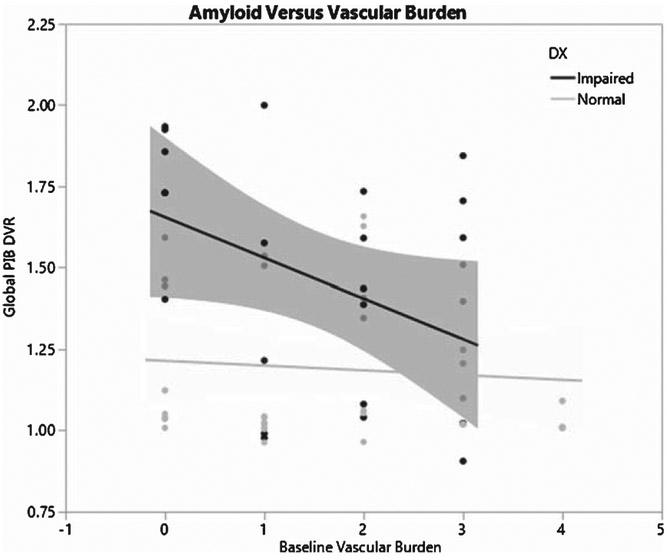Fig. 2.
Graphic depiction of the relationship between vascular burden and cerebral amyloid burden for cognitively impaired versus cognitively normal individuals. For cognitively normal individuals, there was not significant relationship. For cognitively impaired individuals, however, there was a significant inverse relationship, signifying that less amyloid was required to achieve a state of impairment amongst individuals with higher levels of vascular burden (i.e., an additive effect of vascular disease and cerebral amyloid burden).

